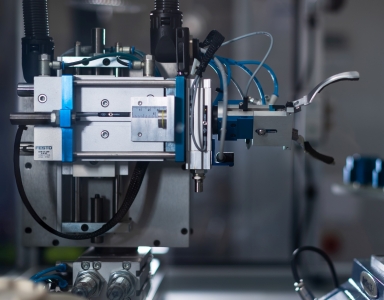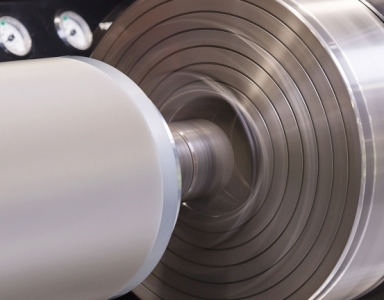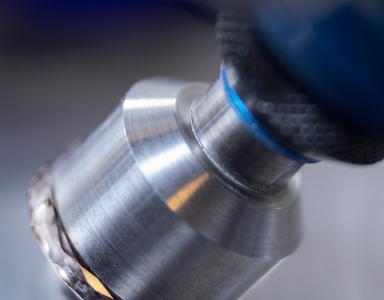Will the unicorns please stand up? | The EIC Accelerator analysed
At the start of fall 2019 the instrument formerly known as the SME Instrument (then part of the Horizon 2020 programme) was officially transformed into the EIC Accelerator. Starting out as a pilot, it will eventually become a recurring instrument within the Horizon Europe programme. Brussels aims to offer more intensive support (read: more money) to what they consider European champions who are able to compete with big and fancy companies from the United States and Asia. All in all: Brussels is looking for European unicorns.
This perspective has its effects on the implementation of the EIC Accelerator. The former SME Instrument focussed on both feasibility studies (Phase 1) and demonstration projects (Phase 2), whereas the EIC Accelerator programme is only concerned with speeding up the growth and expansion of the applying firm. Individual SMEs are able to collect approximately € 2,5 million up to € 3 million in order to finance European upscaling and product demonstrations. For the Dutch, this is a lucrative programme: 70% subsidy for the project costs is significantly more than the usual 30-50% in the Netherlands.
After this phase (TRL 8) Brussels aims to further combine subsidy and equity investors, also known as blended finance (subsidy + financing through investors). Through this concept of blended finance, companies are able to receive financing for a longer period of time: first to prepare for growth and then to actually facilitate growth. This will increase the effectiveness and strength of the applicants as well as retain momentum.
Individuality versus reality
Inclusiveness is of utmost importance to Brussels and the EIC Accelerator is no exception to this rule. Practically every SME from almost any European Union (EU) nation is able to submit an individual application. Individual applications are, however, fairly unique within the Horizon 2020 programme, where generally consortia of 10+ partners are the norm. The EIC Accelerator is for this reason popular among applicants and makes the programme easily accessible to many.
However, individual applications have one particular disadvantage: limited external validation. Every entrepreneur is wildly enthusiastic about their own organisation, believe they are innovative and are keen to talk about their company. This often results in a ‘too good to be true’ image of the future of an organisation. The question at hand is whether Brussels is able to find the diamonds in the rough in a reservoir of silver lined sales pitches.
Drawback popularity | low chance of success
The easy accessibility of the programme also has its disadvantages, especially for individual applicants: there are a lot of SMEs in the EU that all are very interested in the programme. The table below shows the amount of applications per call as well as the amount of applications that scored over 13 points. Approximately 100 of the best projects per call are invited to pitch their project and about 50% make it through this round. As a result, the chances of success are roughly about 4-5%. This is, for Dutch standards, incredibly low.
| Call | Number of applications | Number of applications with a score >13 |
| October 2019 | 1852 | 659 |
| January 2020 | 1849 | 617 |
| March 2020 (non-COVID) | 3969 | 890 |
| May 2020 Green Deal | 2081 | 626 |
| October 2020 (expected) | ~4000-5000 | Unknown |
Factors that influence the chance of success
The chance of success of individual applications are dependent of a number of factors. Whether politics play a role in this will not be discussed. Instead, two important implicit mechanisms are at play here:
1. The evaluation system
Reviewers are able to score 1-5 points within three segments. This doesn’t leave a lot of room for differentiation between good and great applications. The scores are too close to each other to do so. In reality, a tithe of a point can make a difference between placing 20th or 200th in the ranking. It has also become evident that a score of about 14.0 is necessary to even receive an invitation for the next round and thus all four reviewers need the be extremely enthusiastic to give such a score.
When looking for a unicorn or diamond in the rough, the evaluation system is incredibly skewed considering that most people aren’t able to think and evaluate outside of the box. Can one really expect a few reviewers to do what most people can’t and be wildly enthusiastic about a radically innovative proposition?
2. Unlimited re-application
This is a blessing and a curse. On the one hand, a second chance is a great opportunity to improve an application based on newly acquired insights. There are also multiple moments in the year to submit an application. On the other hand, reality has shown that this results in a landslide of initially rejected proposals that are all shifted to a next evaluation round making the chances of success for all applicants even lower than they were before. This problem can be easily resolved if re-applications are limited to a certain degree in a future programme.
In conclusion | high risk, high return
From my point of view, the current EIC Accelerator is suitable for companies that are looking for regular investors to stimulate international market introduction and upscaling. These companies put up with the low chances of success compared to national programmes and aren’t restricted by a tight schedule. Furthermore, the EIC Accelerator may result in some beautiful synergies as applications often need certain overlap in order to attract investors.
With that in mind, I would advice Brussels to up their demands of applicants. For example: by demanding a minimal amount of existing market activities and realised growth by an organisation. This way, one can start to focus on scale ups with actual potential.
Finally, we can conclude that the amount of interest in the EIC Accelerator shows that there is a lot of interest in European funding programmes that do not require a large consortium. Food for thought for the European Commission. Hopefully, they will take this into consideration.
Time will tell whether the European Commission is able to find their unicorns. Until then, the EIC programme will remain – fully in unicorn style – high risk – high return.
Contact us for more information
Or call us directly: 088 495 20 00




